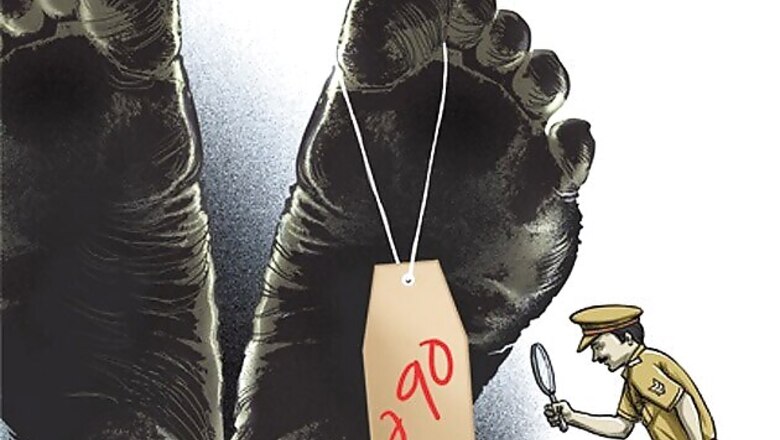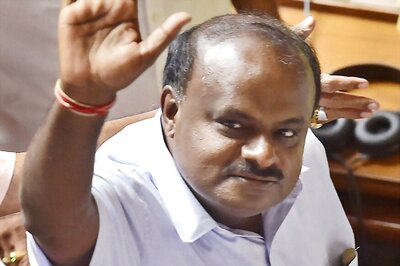
views
Bangalore: The final destination of life is the time when people known and unknown show immense respect to the dead. Forgetting every wrong done, the relatives and those harmfully effected by the dead forgive. But there are many dead who do not have this privilege. They are dead bodies without any identity. They, are what the US call John or Jane Doe. In India, the known name given to such males is Ashok Kumar and for some reason, the female dead has not been even given a name, yet.
So, what happens with such Ashok Kumars and Asha Kumaris (We wish to give her a name)? In Bangalore, there were 423 cases of unidentified and unsolved cases in the year 2010. The following year, in 2011, as far as cases pertaining to unnatural deaths were concerned, 477 cases were reported, out of which only 17 were traced and 460 remained untraced. 44 cases of accidental death were reported and not a single dead body was traced. Finally in 2012, total number of cases relating to unnatural cases reported were 286, of which only three were traced.
As far as accidental cases are concerned, 15 were reported and none would be traced. So what is the fate of this misery of the dead? They are buried in probably the Lalbagh burial grounds in a manner that is truly not what one might deserve. The Anatomy Act, enacted by various states in India and applicable to states, provides for the supply of unclaimed bodies to hospitals and medical and teaching institutions for the purpose of anatomical examination and dissection and other similar purposes.
Before 2006
In Bangalore, before 2006, most such cases were lawfully supplied to medical colleges as cadavers for anatomical dissection. “Cadavers are required for studying the human anatomy in all systems of medicine. As medical institutions of various systems mushroom, the need for cadavers has increased proportionately. Each batch of 100 students needs one dead body. A medical college will require about 10 cadavers per year. Cadavers used by these institutions are usually unclaimed bodies obtained by the police. Occasionally they are donated by relatives of the deceased, to teaching institutions, according to the dead person’s wishes,” says Dr P S Verghese, Department of Forensic Medicine, St. John’s Medical College.
After 2006
But after an incident in 2006 when the police failed to identify a murdered body and sent it to a medical college and later the body was identified and cops suspended for the laxity, there was a rule passed which made it mandatory for every dead body to go through a postmortem. After autopsy this body cannot be used for dissection and the police disposes of it as an unidentified body. So now, many medical college are facing shortage of bodies in Bangalore. Right now, they completely depend on bodies which are donated. But the number of such cases are less.
Dead Body corruption
Previously there was a order passed which stated that unclaimed bodies could be sold by the government medical college for `2000 to `5000 to other colleges. But then there was a sense of corruption which the police found in this set up. “Bodies started to be sold on a premium rate post this order. So, while the specified rate was Rs 5,000, doctors started to sell the body at Rs 25,000 claiming severe shortage. Easily, Rs 20,000 was being pocketed and Rs 5,000 sent as billing for the dead body,” said a source. Subsequently the order and the practice were stopped.
Karnataka Anatomy Act (KAA)
“As per the Karnataka Act Sec 4 (1) if a dead body is found in a public place, hospital, or prison the authority in charge of such hospital or prison or any police officer shall, with the least practicable delay, report the fact to the “authorised officer” who shall take possession of the unclaimed body.
If there is any doubt regarding the cause of death the officer should forward the unclaimed body to the police authorities. Otherwise, he may hand the body to the authority in charge of an approved institution for the purpose of conducting anatomical examination and dissection or other similar purposes.Under the KAA (Sec 3), by notification in the official gazette, the state government may name more officers who shall be competent to act under the said section,” says Dr Varghese.
At present labelling a dead body found in a public place “unclaimed” or “unidentified” is the discretion of the police. However no such mention is found in the Karnataka police manual. The working procedure followed now is: if a dead body is found in a public place the police with jurisdiction conduct an enquiry. If they believe that the deceased is a destitute and if there are no injuries on external examination, it is presumed that the person died of natural causes and the body is labelled as unclaimed. Otherwise it is labelled ‘unidentified’ and as per the Karnataka police manual, a detailed search for the next of kin is made, based on any personal belongings or particulars available on the body, and the body is sent for post mortem examination to determine the cause of death.
The joint commissioner of crime, Bangalore East, Dayananda said, “Tailor marks on the victims cloths was a old form of tracing the relatives of the dead person, at times we do follow it. But with modern era, that way has almost become extinct. We cannot wait for a longer period always and preserve the dead body, in that case we preserve the skull. In many instances, DNA test is also conducted and fingerprints are also kept.” He added, “In cases where mobile phone and other materials are recovered, tracing the origin of the dead person becomes quite easy.”
One of the officials from City Crime Records Bureau informed City Express that many a times by merely looking at the dead body they can figure out the native place they might belong to and in that case they get in touch with the police station of the other states where they assume that the dead body belongs. When the primary tools fail, the police department puts up the pictures of the bodies on their website and also alerts the other police stations on the matter.
The data is also included in the State Crime Records Bureau as well as National Crime Records Bureau with a hope to trace the identity of the dead. “The KAA is not clear about the ‘reasonable waiting period’ after a person’s death to label it unclaimed. The Kerala Anatomy Rules, 1960, define this as 24 hours if the nearest relative is in the same district and 72 hours if the relative is outside the district. Imagine a tourist travelling alone from Delhi to Bangalore.
If the tourist dies in a public place after coming to Bangalore and if his personal belongings are lost, the body is labelled either unclaimed or unidentified and shifted to a mortuary by the police. The police preserve the available particulars of the deceased, clothes, etc., and if they are able to trace an address the next of kin will be informed. Otherwise, after three days the body will be subjected to post mortem and disposed of. If the police labels it an unclaimed body it will land up on a dissection table. It may be difficult for relatives to claim the body within 72 hours. There is no provision in the KAA for a record of the efforts made by the concerned authority,” said Dr Varghese.
The KAA specifically mentions that an “authorised officer” is to take over “unclaimed bodies” and decide whether the body is to be supplied to a medical college or, if foul play is suspected, to inform the police so that they order a postmortem to determine the cause of death. “In Karnataka, no such officer is designated. The police officer has taken the above role,” said Dr Varghese.
There is nothing mentioned in the KAA regarding the procedure the medical college must follow when receiving an unclaimed body - documenting the source, any identification marks, providing the necessary certificates, etc. “Some colleges even have an excess of bodies but there is no provision in the Act for this excess to be transferred to other colleges or for the body to be sold for value. Nor is there anything on the disposal of body parts after dissection. There is no authority at present to monitor these activities,” said Dr Varghese.




















Comments
0 comment